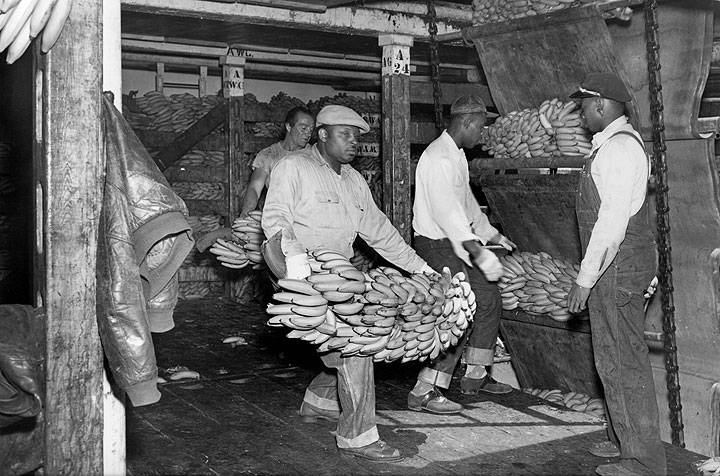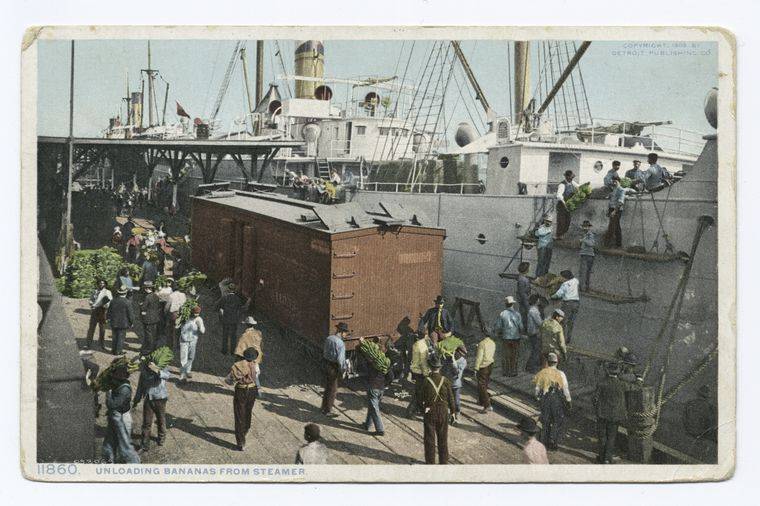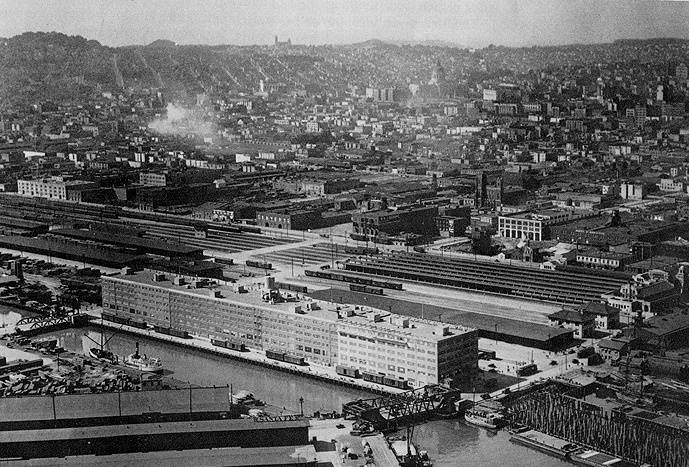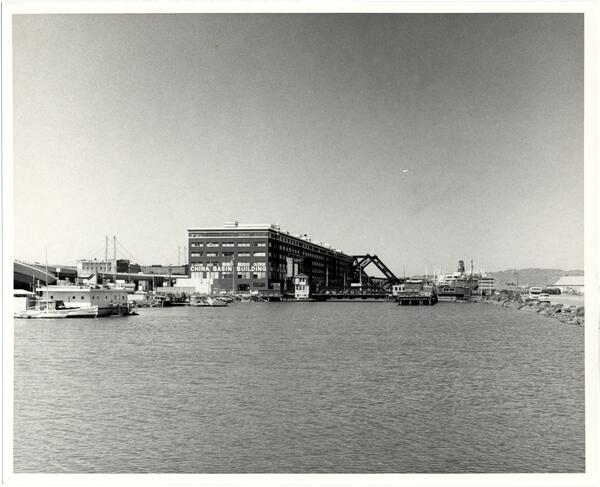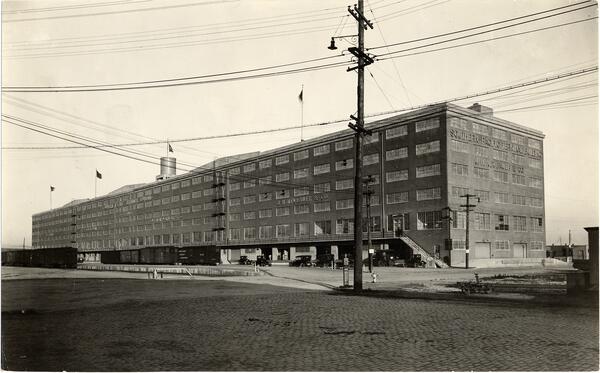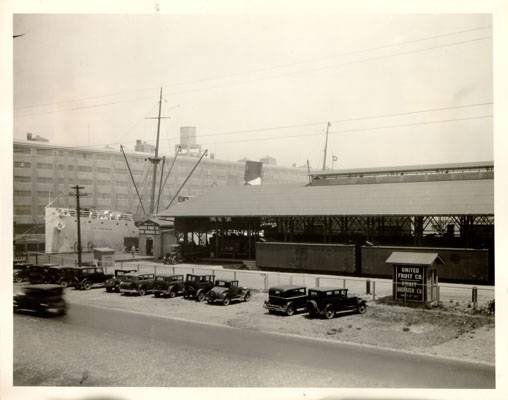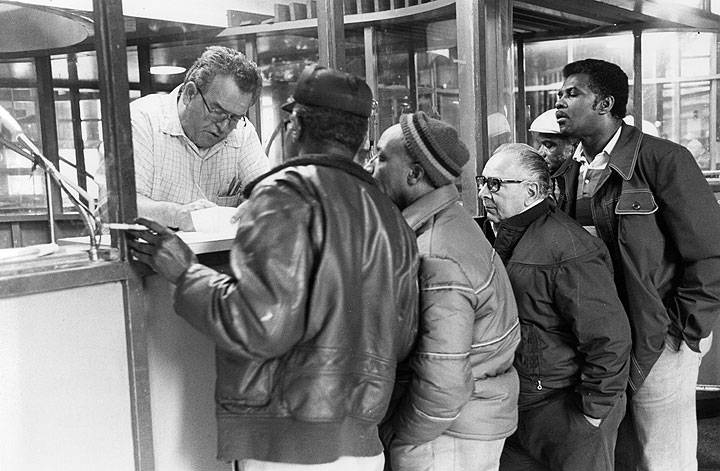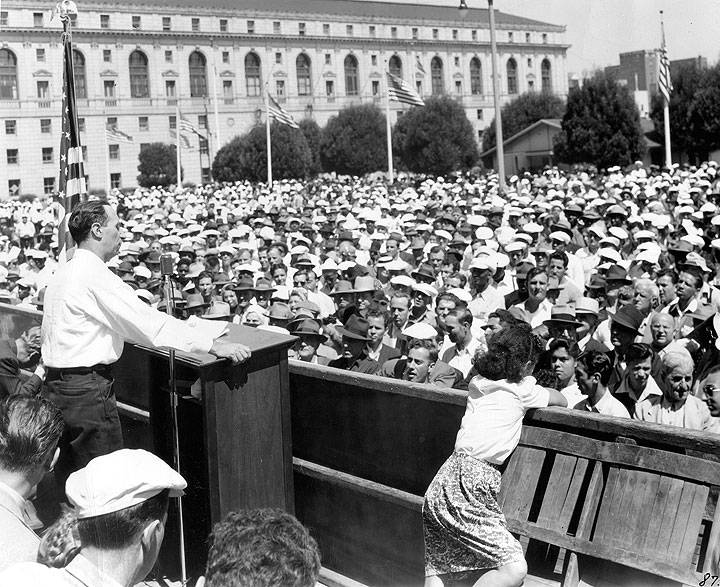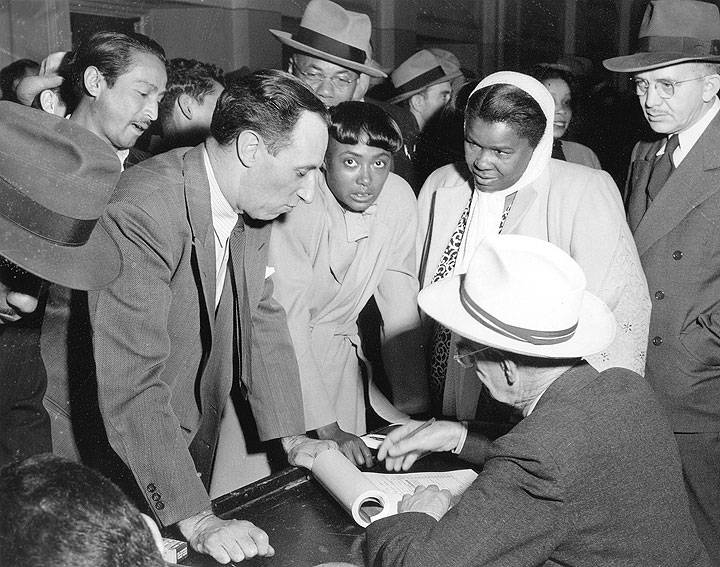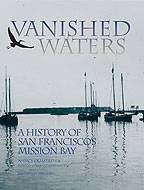Mission Creek Banana Boats: Difference between revisions
No edit summary |
(added photos and decades) |
||
| (One intermediate revision by the same user not shown) | |||
| Line 22: | Line 22: | ||
'''China Basin Building along Mission Creek, 1920s.''' | '''China Basin Building along Mission Creek, 1920s.''' | ||
''Photo: San Francisco History Center, SF Public Library'' | |||
[[Image:China Basin Building 1983 by Larry Moon AAB-6703.jpg]] | |||
'''China Basin building in 1983 seen from further up Mission Creek looking eastward.''' | |||
''Photo by Larry Moon, courtesy San Francisco History Center, SF Public Library'' | |||
[[Image:Southern Pacific Wholesale Grocers warehouse at China Basin 1934 AAF-0883.jpg]] | |||
'''Same building in 1934 when it was the Southern Pacific Wholesale Grocers warehouse at China Basin.''' | |||
''Photo: San Francisco History Center, SF Public Library'' | ''Photo: San Francisco History Center, SF Public Library'' | ||
| Line 60: | Line 72: | ||
''This story is excerpted from Chapter 15 of "Vanished Waters: A History of San Francisco's Mission Bay" by Nancy Olmsted, published by the Mission Creek Conservancy.'' | ''This story is excerpted from Chapter 15 of "Vanished Waters: A History of San Francisco's Mission Bay" by Nancy Olmsted, published by the Mission Creek Conservancy.'' | ||
''Al Ohta interview with Nancy Olmsted, March 6,1986.'' | |||
[[Why the 1971-72 ILWU Strike Failed|Prev. Document]] [[Karl Yoneda|Next Document]] | [[Why the 1971-72 ILWU Strike Failed|Prev. Document]] [[Karl Yoneda|Next Document]] | ||
[[category:ILWU]] [[category:Labor]] [[category:1940s]] [[category:1950s]] [[category:Mission Bay]] [[category:Vanished Waters]] | [[category:ILWU]] [[category:Labor]] [[category:1930s]] [[category:1940s]] [[category:1950s]] [[category:1980s]] [[category:Mission Bay]] [[category:Vanished Waters]] | ||
Latest revision as of 22:46, 1 November 2024
"I was there..."
by Al Ohta, longshoreman
Unloading banana boat, San Francisco, c. 1940s.
Photo: ILWU Archives
From 1947 through 1959 there were too many longshoremen for the number of jobs available so the books were closed. Finally in 1959 a large group of us, between 600 and 800, were added to the books. There were “A” men and “B” men, and the B men got the Mission Creek banana boats because it was dirty, strenuous work.
This image of bananas being unloaded is from New York, but the scene along San Francisco's Mission Creek would have been much the same.
Photo: New York Public Library
The green bananas were stowed in the hatches on their stalks. There were two groups of workers. One fed the banana stalks onto the conveyor belt that brought the fruit up out of the hatch. The dock group walked the bananas from the belt to the chilled refrigerator cars on the siding next to the China Basin Building. There was never much room between stalks so nobody wanted to work on the end of the conveyor belt where the bananas would fall off.
China Basin Building along Mission Creek, 1920s.
Photo: San Francisco History Center, SF Public Library
China Basin building in 1983 seen from further up Mission Creek looking eastward.
Photo by Larry Moon, courtesy San Francisco History Center, SF Public Library
Same building in 1934 when it was the Southern Pacific Wholesale Grocers warehouse at China Basin.
Photo: San Francisco History Center, SF Public Library
Every few hours we would shift cars and everybody looked forward to that break. It took nine hours to complete a ship. It only paid $2.85 an hour in 1959. You depended on extended hours, and overtime made us well-paid workers. We got time and a half after six, not eight hours.
United Fruit Company offices across Mission Creek from the China Basin Building, c.1930s.
Photo: San Francisco History Center, SF Public Library
The banana boats were known to be more boisterous, with more drinking going on. There was a lot of good feeling and humor and a big crap game going on that really upset the wives so much the company put a stop to it. Many of the longshoremen worked partners. Some men had the same partner on jobs for years. If a man died he might leave his property to his work partner rather than his family. Speaking of dying, you had to die on the job to collect union benefits and there is a story of a longshoreman dying at Crabby John’s (Blanche’s today) and his buddies stowed him in a box car so his widow would collect.
The key to Bridges’ success was the honor system in the hiring hall. You get there early, about 6:30 a.m., and you have rotary hiring with the fellows with the least hours that month getting the first jobs. Start fresh every month. This system zeroed in on the problem of how to make the work fair. Bridges was a very creative guy. He got all for the men that he could out of the transition from bulk cargo to container ships.
Hiring hall, c. 1950s.
Photo: ILWU Archives
ILWU President Harry Bridges addresses Labor Day rally in San Francisco's Civic Center, September 1947.
Photo: ILWU Archives
Harry Bridges at a warehouse Local 6 meeting in 1947.
Photo: ILWU Archives
This story is excerpted from Chapter 15 of "Vanished Waters: A History of San Francisco's Mission Bay" by Nancy Olmsted, published by the Mission Creek Conservancy.
Al Ohta interview with Nancy Olmsted, March 6,1986.

